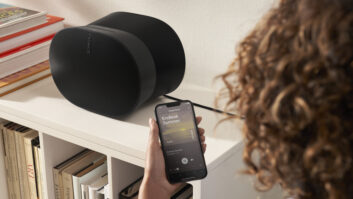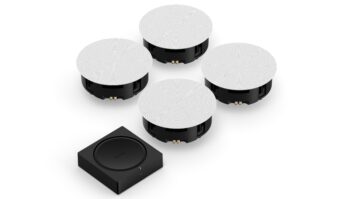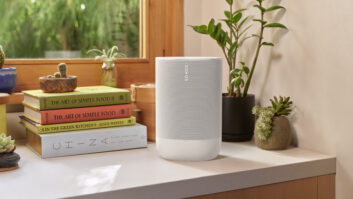Let me begin this by saying I’m a Sonos fanboy. I’ve loved them for years. What follows may not seem like I love them, but I do. Critical feedback and love don’t have to be mutually exclusive, as I’m sure all the parents out there can attest.
In case you missed it, early last week, Sonos sent an email to its entire customer base (including your customers. You know, the customers you introduced to Sonos and they directly sell to without your permission?) informing them that some of their gear (which was specifically listed in their email) was about to be sunsetted, shutting off access to software updates. Any systems with a mix of old and new gear would default to the least common denominator, meaning if you had a bunch of new Sonos gear and an older Amp somewhere in the house, updates would cease for everything until you upgraded the offending gear. Needless to say, this caused a bit of a stir.
As soon as the Sonos email came out, our phone lines lit up like a Christmas tree. Customers called in expressing confusion, anger, and excitement, seemingly all at once. Some wanted to know why we had sold them obsolete gear. Others wanted to know if their systems would continue to work.
I have to admit, I admired the chutzpah of this email. I’ve had wild fantasies of sending messages just like this to our clients, letting them know that, just like a gallon of milk, their system had spoiled and needed upgrading. I’ve planned, dreamt, and schemed, yet haven’t implemented this kind of marketing campaign. Why? Every time I run through the use case scenarios around doing this, I end up with angry and confused customers.
We’ve concluded at Livewire the only way to do something like this effectively is to tell our customers that their gear has an expiration date before the sale and then start marketing to them using language around sunsetting and upgrading. This is where Sonos slipped up. Their marketing has always been that Sonos gets better over time with auto updates, with nary a mention of products like Amps (which are similar to lightswitches in their perceived need for upgrading) becoming obsolete over time. Instead, they suddenly took a hard right turn and decided to change their rhetoric seemingly without having focus grouped it or consulting their dealer council. Why did they do that? I have no idea.
I understand that hardware becomes insufficient over time to support the latest and greatest software, and they could’ve surgically stopped updating the older gear. I remember when Sonos sunsetted their touchscreen remote and wireless bridge. Their explanations made sense. They had a new approach and customers didn’t have to upgrade, but their older gear wasn’t coming along for the ride. This time around they left folks feeling like their systems were aged before their time. Maybe it’s because this was the first time they’d done this with speakers and amplifiers. It’s definitely an industry first move. I actually don’t mind having to upgrade gear over time, but it’s important that we’re able to handle the conversation proactively vs. reactively.
It would’ve been nice to have a heads up from Sonos about this. I think our channel could’ve saved them a lot of headaches. I commend their CEO for sending out a follow-up letter a few days later apologizing and offering to make things right. That’s a solid move and the sign of a healthy culture.
I certainly don’t claim to be perfect and imply that we’ve never flummoxed communications with our clients, but it’s always healthy to ask how things could go differently next time. For Sonos, that seems pretty clear. It’s all about communicating to customers that newer software features go to newer hardware and offer upgrade spiffs (which they currently do) without clients feeling like they now own a paperweight. Apple’s great at this. They continuously produce new gear and, without explicitly telling you to buy the new gear, you want to buy the new gear. How can Sonos accomplish the same thing? I admit that’s tough when a lot of their hardware sits behind the scenes. Maybe they move to a separate processor model where older amps can stay in play? Control4 has done this. I suspect the buying behavior there would see clients buying the new gear and speakers even when presented with the option to stick with what they have.
At the end of the day, it’s all about clients not being made to feel like you’ve got them bent over a barrel.
I wish Sonos all the best and love their new products!
Stay frosty, and see you in the field.







